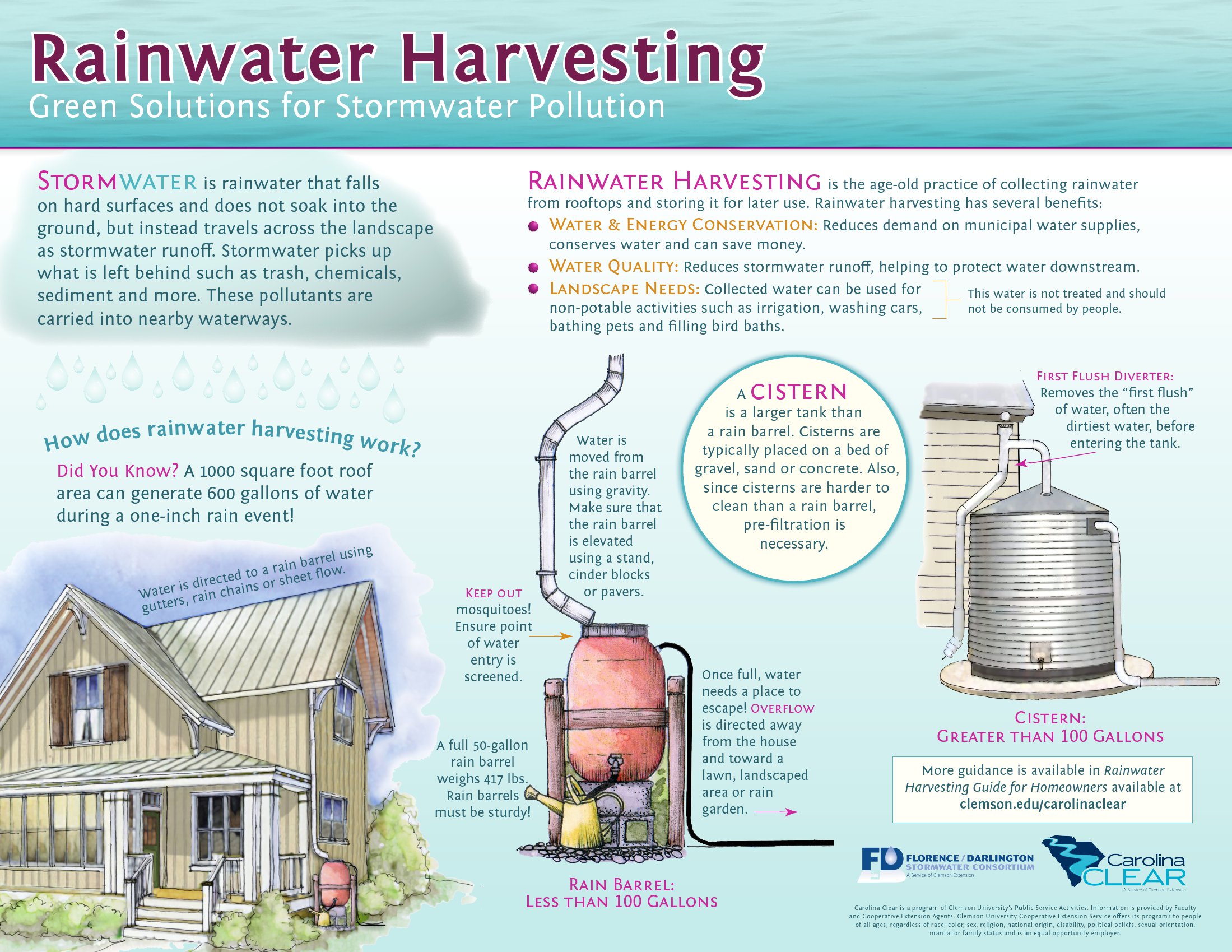Gardening weather is right around the corner, and this is the perfect time to install a rain barrel. Many gardeners choose to collect rainwater to be used on their gardens. It’s free, it’s easy, and it is better for your garden than tap water.
The rain water that gets stored in your rain barrel is not washing into storm drains, so it is better for local waterways. This is water that is not safe for people to drink, but plants love it, since rainwater does not contain chlorine like tap water. During hot, dry spells in the summer, using water from a rain barrel reduces water demand on municipal water supplies. Plus, using a rain barrel will cut down on water used from the hose, which could save money on utility bills.

Rain barrels are easy to install, and can make watering a garden easier. Michelle Bailey with Keep Florence Beautiful hooks her rain barrels up to a sprinkler system with timers, so she does not have to worry about watering her gardens.
Rain barrels should be located so water that drains off the roof goes into the bucket. Gutters and downspouts can be directed into the bucket. Rain chains, or simple sheet flow from a roof are other methods to get water into the barrel. It is important screen the inlet where water enters the barrel to prevent mosquito breeding and restrict debris from entering. Locate the barrel as close to the end use as possible. For example, if you plan to water the containers on your front porch, try to put the barrel in the front of the house. You will be more likely to use the water if it is convenient and the whole idea of collecting the water is to put it to use.
Rain barrels should be elevated to allow for gravity feed. For every 1 foot in elevation, approximately .4 PSI is generated. Typically rain barrels elevated 12-36 inches above the ground have enough pressure to push water through a spigot to fill a watering can, hose, or for drip irrigation. Soaker hose can be used but the pressure reducing gasket must first be removed. When elevating, the structure needs to be sturdy. A 55-gallon barrel weighs over 450 pounds when full.
Each square foot of roof generates 0.6 inches of rain per 1” storm. So a 1,000 square foot roof will generate 600 gallons of water. Assuming the roof drains evenly to 4 corners with downspouts, that would be 150 gallons per downspout, easily filling a 50 gallon barrel.



